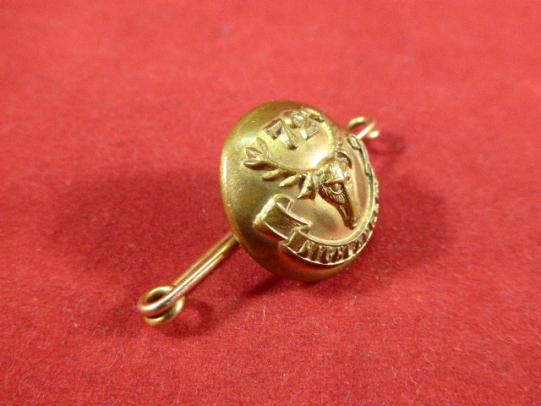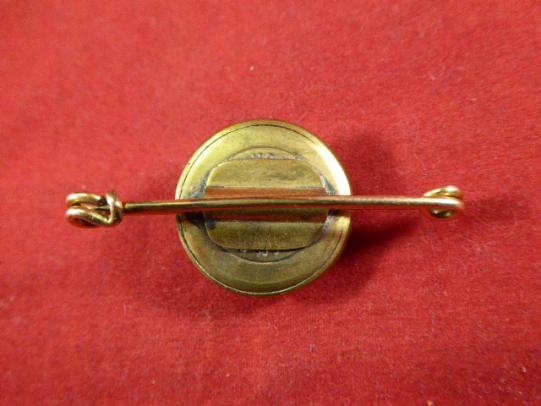Rare 19th Century 72nd Highlanders Regiment Tunic Button Sweetheart Bar Brooch
Here on offer is a fine example of a rare 19th century 72nd Highlanders Regiment tunic button sweetheart bar brooch.
The tunic button still retains all its original gilt and crisp detail to the stags head and lettering on the front. It has been professionally attached to a gilt pin so that it can be worn as a bar brooch.
Some history of the 72nd Highlanders Regiment.
In 1778 the 78th Regiment, was renumbered The 72nd ( Highland ) Regiment of Foot in 1786. There were three previous regiments to bear this number, none of which has any Scottish connection. In 1782 the Regiment was in India assisting the Army of the East India Company in its campaign against Tipoo, Sultan of Mysore and later it helped capture the Cape of Good Hope from the Dutch in 1806. It raised a second battalion in 1804, although it did not see service and was disbanded in 1814. 1809 was the year that all Scottish regiments will remember, as it was the year in which many of the regiments lost their `Highland' status and ceased to wear the kilt. Unfortunately, the 72nd was one of those regiments. It did not see service in Europe during the Napoleonic Wars, but served for most of the period in Cape Colony and Mauritius . After fighting in the Kaffir War in South Africa , they returned home in 1821 and were then stationed in Ireland . In recognition of its record as a reliable regiment, it was re-titled The 72nd (Duke of Albany's Own Highlanders) in 1823 and allowed to resume wearing highland dress such as the feather bonnet. However, instead of the kilt, it wore trews of Royal Stuart tartan. The Regiment went to the Cape again in 1828 and was engaged in the Kaffir War of 1835, before returning home in 1840. It then served in a variety of places, Gibraltar , Barbados and Nova Scotia , before being sent to the Crimea to take part in the latter stages of the siege of Sevastopol . It then went to Bombay and saw service in central India during the Mutiny, including the capture of Gwalior and the pursuit of Tantia Topee, followed by service in the Umeyla Expedition of 1863. It then returned home in 1865, before returning in 1871. It then served on the North West Frontier and took part in the Afghan campaigns of 1878-80, including the battle of Kandahar. The regiment was amalgamated in 1881 as the 1st and 2nd Battalions Seaforth Highlanders (Ross-shire Buffs, The Duke of Albany's).
The bar measures 1.5” (3.8cm) wide and the button is 0.75” (1.8cm) diameter and weighs 4.9g.
Please see my pictures for the details of the condition, which complement this description.
Please see my TERMS OF BUSINESS regarding Deliver Charges and Insurance regarding additional insurance cover, should you require it, BEFORE the item is dispatched.
The responsibility lies with the customer to check with your Customs restrictions that this item can be imported into your country.
Code: 50218
25.00 GBP






